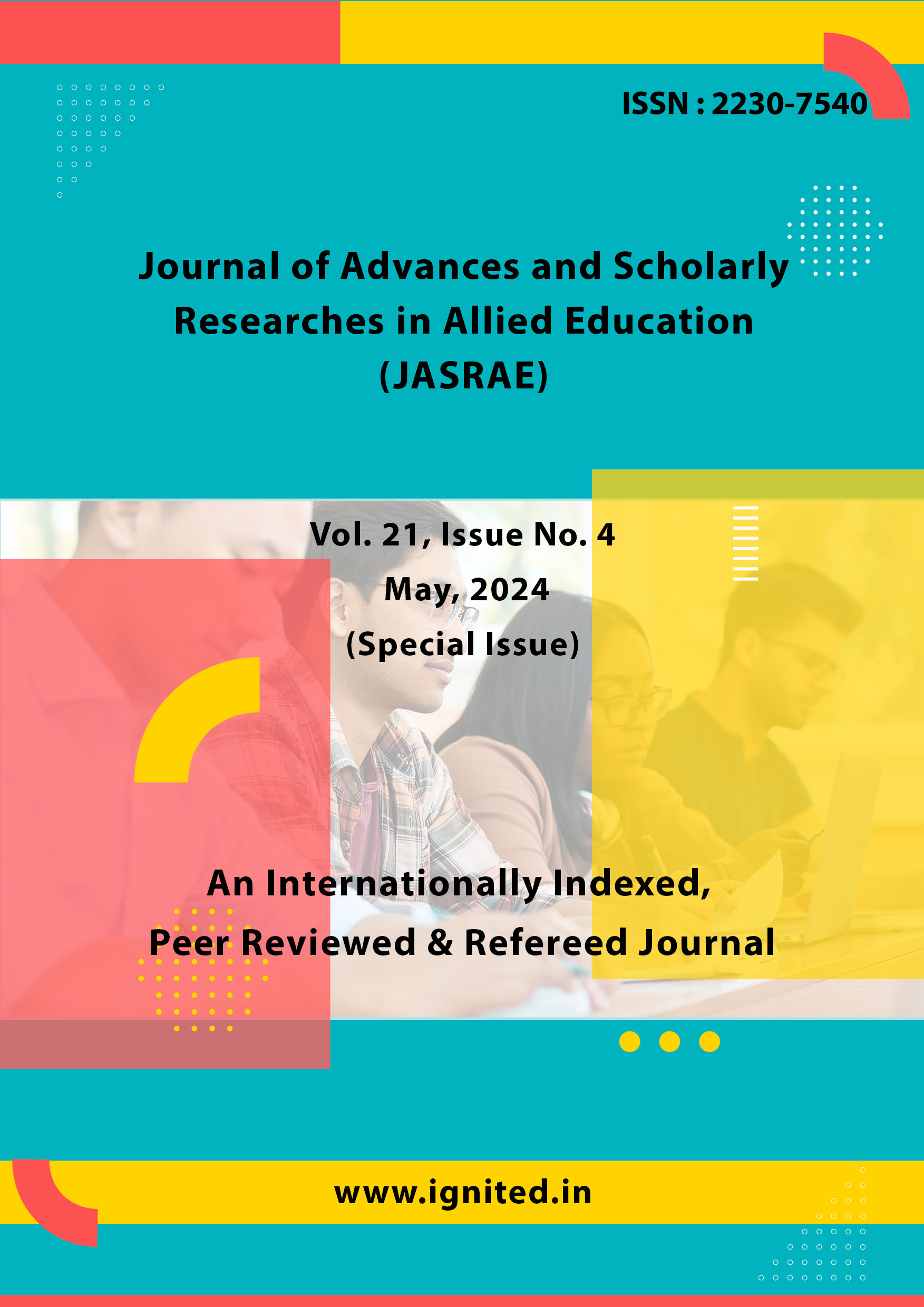Goal 4 of Sustainable Development Goals (SDG) and India’s Education Policy: A Comparison
DOI:
https://doi.org/10.29070/wgatjf62Keywords:
India, SDGs, Quality Education, Access, Equity, InclusionAbstract
Education and literacy serve as crucial benchmarks for a society, significantly contributing to the socio-economic progress of an entire nation. Recognizing education as the cornerstone of human resource development, the Government of India’s New Education Policy (NEP) has undergone a consultative process. In order to adapt to the evolving needs of quality education, innovation, and research in today’s world, NEP strives to transform India into a center of knowledge by providing students with skill enhancement and advancement opportunities, including ICT and vocational training.
India has made remarkable strides in implementing the Education for All initiative. Various key programs and policies have been launched to ensure that all children between the ages of six and fourteen have access to free and compulsory education as a Fundamental Right. Initiatives like Sarva Siksha Abhiyan (SSA) and Right to Education (RTE) have played a crucial role in boosting the education system in India. While there has been a significant improvement in primary education enrollment rates nationwide, there are still challenges that need to be tackled. This paper primarily focuses on the current strategies adopted by India to align with Goal 4 of the Sustainable Development Goals (SDGs) in the Indian context, by incorporating them into the development of the New Education Policy and its positive impact on achieving quality education, as highlighted in SDG 4. It also delves into the education achievements at primary, secondary, and tertiary levels in India, as well as the major obstacles hindering quality education and accessibility in the education sector.
Downloads
References
Banerji, Rukmini (2016), “Teaching “toppers” or Learning for All? ASER 2016-Rural”, ACER Centre, New Delhi.
Dreze Jean and Sen Amartya (2002), India Development and Participation, Oxford University: Oxford University Press.
Duraisamy, P. (2002), “Changes in Returns to Education in India, 1983–94: By Gender, Age-cohort and Location”, Economics of Education Review, 21 (1): 609-22.
Govinda, R. (2002), India Education Report: A Profile of Basic Education, New Delhi: Oxford University Press.
Hoque, Nurzamal and Ratul, Mahanta. (2020), “Gender Gaps in Elementary Education in India in the post Right to Education Act Period: Implications for Policy”, Space and Culture, India, 8 (2): 117-28. http://dx.doi.org/10.20896/saci.v8i2.841.
Jat, Ramavtar and Puneet, Gautam. (2022), “Issues and Challenges of School Education: An Indian Scenario”, Journal of Global Resources, 8 (2): 116-19.
Juneja, N. (2010), Access to what? Access, diversity and participation in India’s schools, United Kingdom: University of Sussex.
Sridevi, K.V. and Nagpal, Mohini. (2020), “Trends in School Dropout Rate in India”, Researchers' Guild, 2 (1): 2-24.
Kaur, Navdeep. (2014), “Awareness of Right to Education among Secondary School Teachers”, Journal of Social Science Research, 6 (2):1004-8.
Kingdon, Geeta Gandhi (2007), “The Progress of School Education in India”, Oxford Review of Economic Policy, 23 (2): 168-195.
__________ Cassen, R., McNay, K., and Visaria, L. (2004), “Education and Literacy”, in T. Dyson, R. Cassen, and L. Visaria (eds.), Twenty-first Century India-Population, Economy, Human Development and the Environment, Oxford: Oxford University Press.
Kumari, Rakhi, Patel, H. B. Lakshmi, Y. Vijaya and Pal, Ajay. (2023), “A SWOT Analysis of E-Learning for Digital Education”, [Online: Web] Accessed 10 Feb. 2024 URL: http://dx.doi.org/10.55529/ijitc.33.23.29.
Malhotra, Smitu, and Venugopal Pingali. (2019), “Rural immersion program in India: integrating management education with community”, Development and Learning in Organizations: An International Journal, 34 (2): 13-15.
Malvankar, Alka. (2018), “Elementary School Education and the Right to Education Act, 2009”, Sociological Bulletin, 67 (2): 220-35.
Mandal, Ranjit Kumar. (2021), “India Foundation for Education Transformation: It’s Service to the Society”, Journal of Advanced Research in English and Education, 5 (3): 9-11.
Mehta, Arun C. (2006), “Elementary Education in India: Where do We Stand? State Report Cards”, NUEPA, New Delhi.
National University of Educational Planning and Administration (2007), DISE (2006-07) Elementary Education in India: Progress towards UEE, Government of India, New Delhi
__________ (2014), Education for All- Towards Quality with Equity: India, Ministry of Human Resource and Development, New Delhi.
Planning Commission (2013), Twelfth Five Year Plan 2012-2017 Social Sector, Government of India: New Delhi.
R. Solai Raja, S. Banumathi, and T. Dhanabalan. (2011), “Primary School Education in India: An Overview”, Indian Journal of Applied Research, 3 (50): 439-40.
Thapa, Rukmini, and Kaustav Kanti Sarkar. (2019), “Universal Elementary Education in India: Barriers and Persistent Challenges”, Social Change, 49 (2):257-75.
Ullah, Athar. (2023), “Education Voucher Scheme in India: Would Lead to School Choice and Universal Education?” Journal of International Education and Practice, 6 (1): 27.
United Nations Development Programs (2015), Sustainable Development Goals (2015-2030), United Nation.
__________ (2015), Good Practices Resource Book- Social Sector Service Delivery, Niti Aayog, GoI: New Delhi











